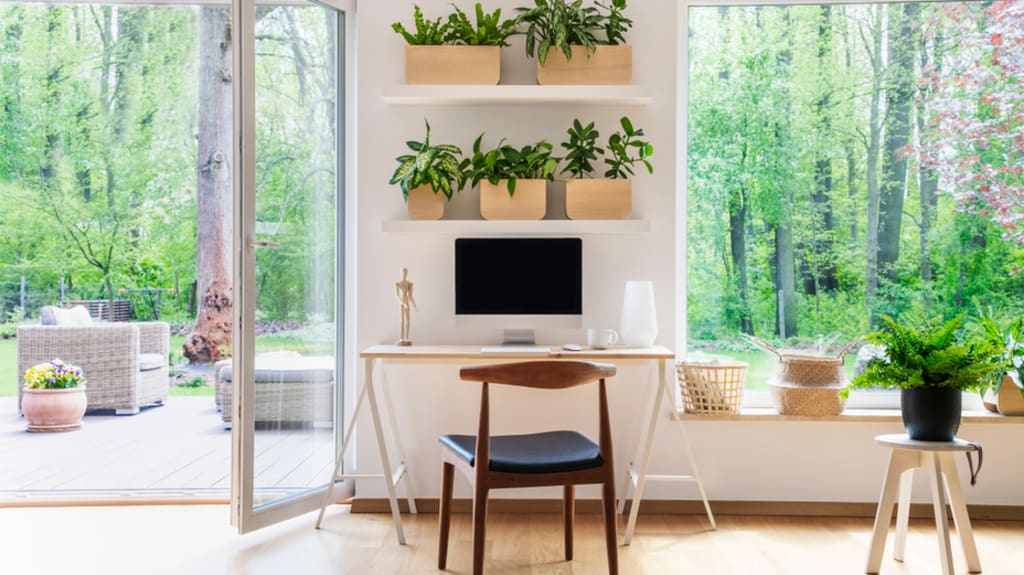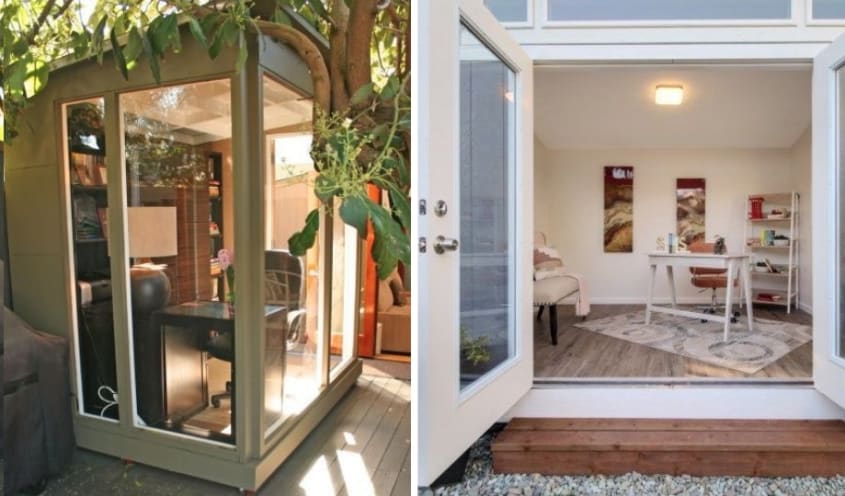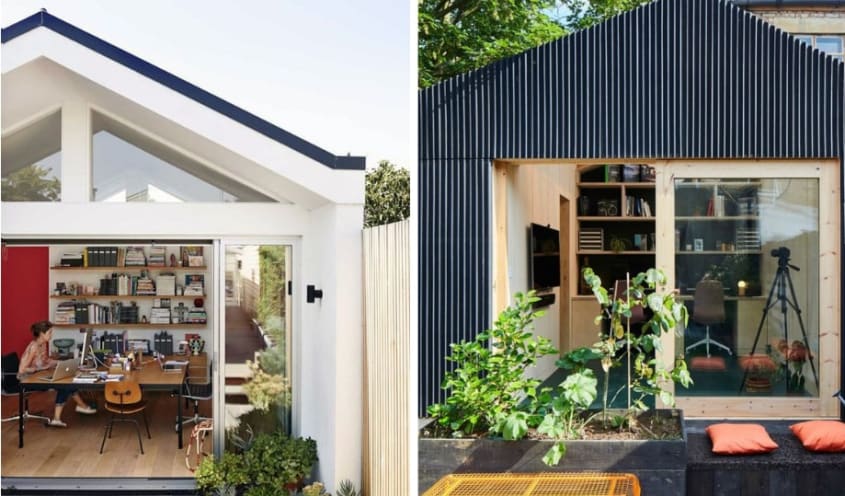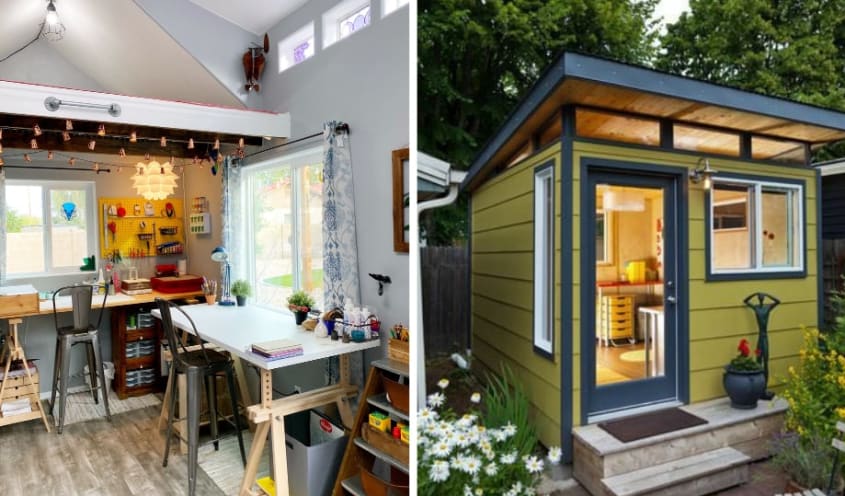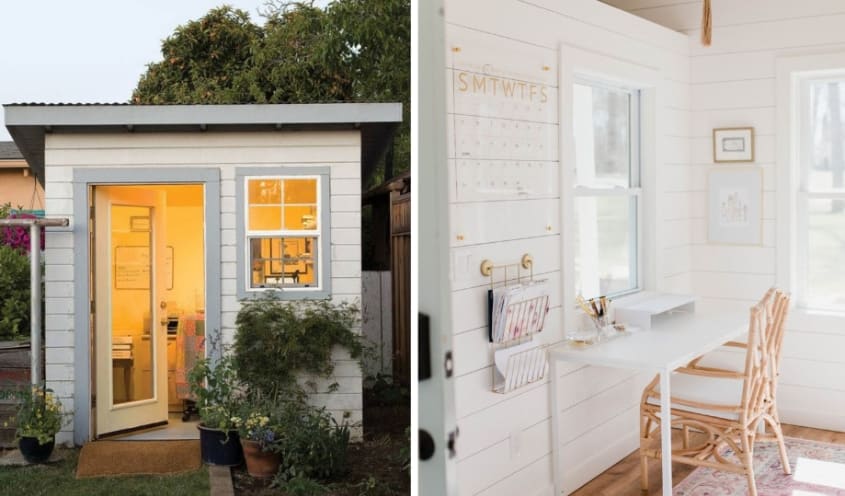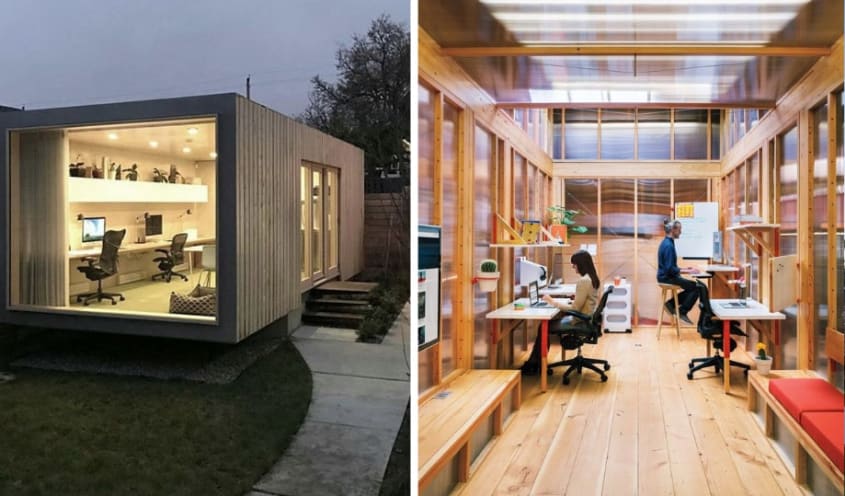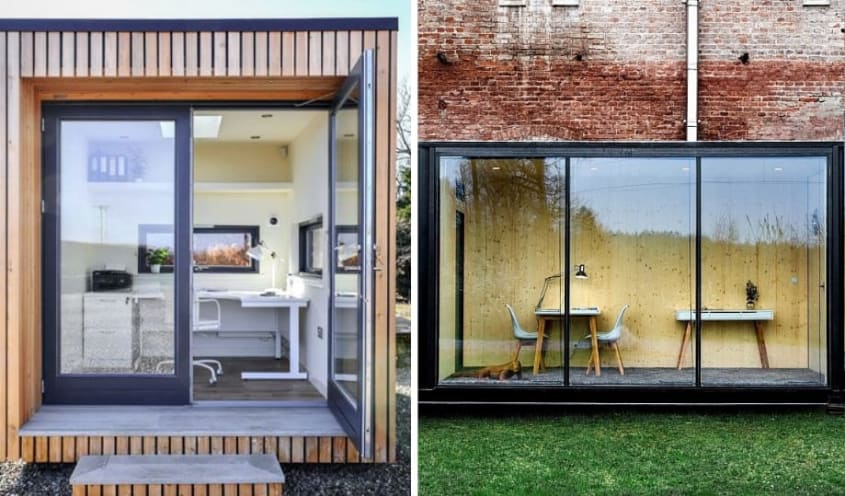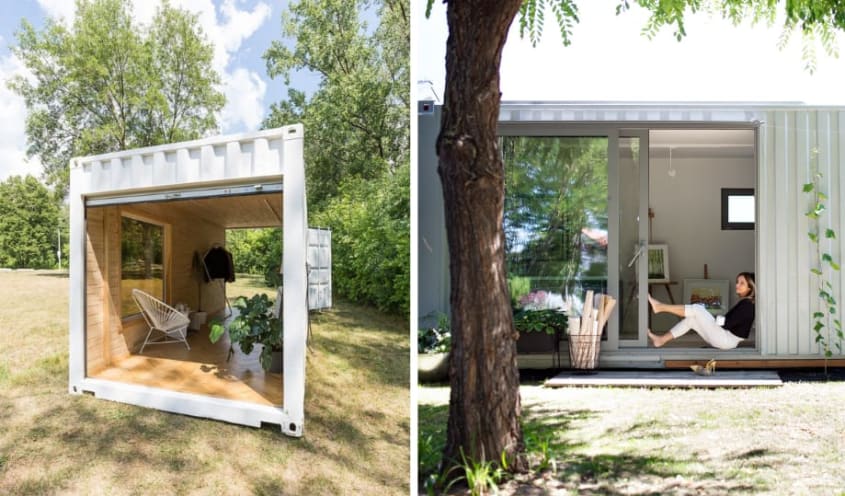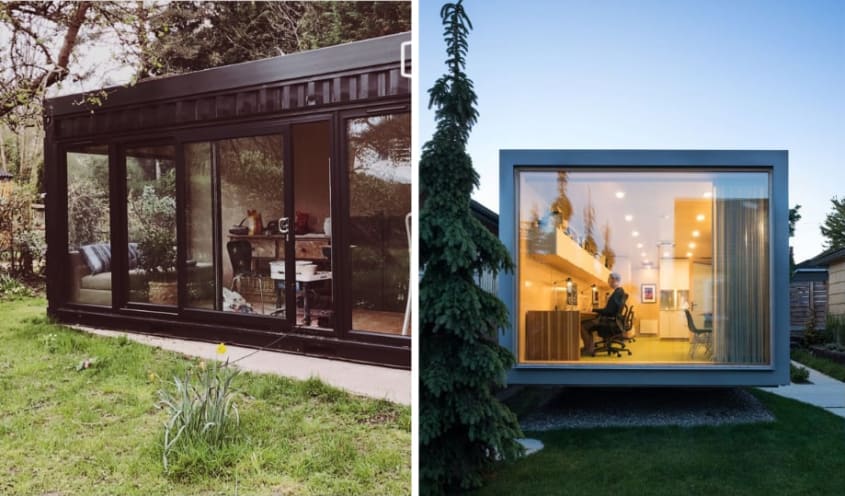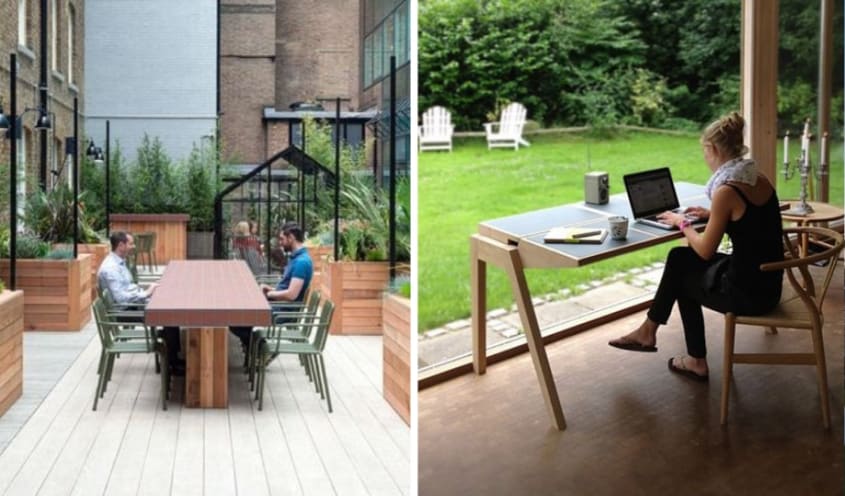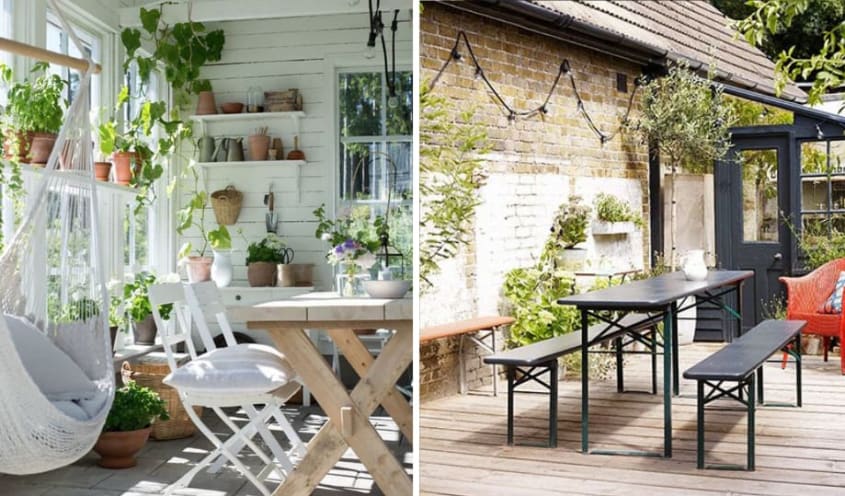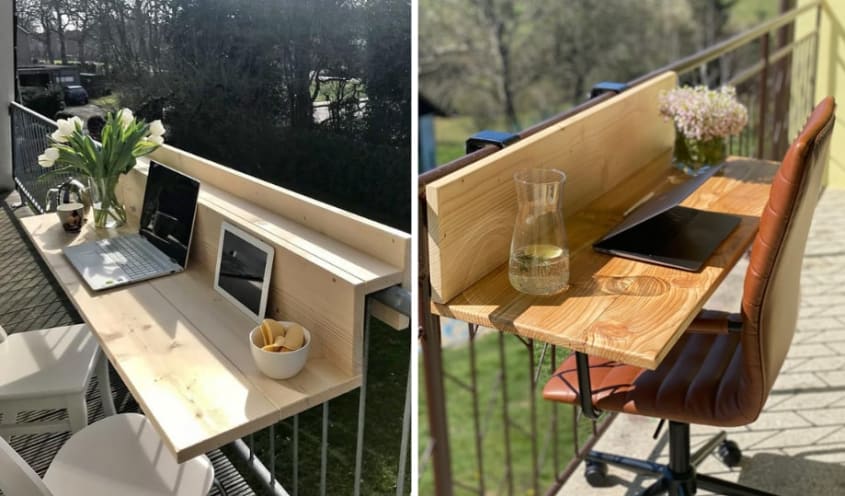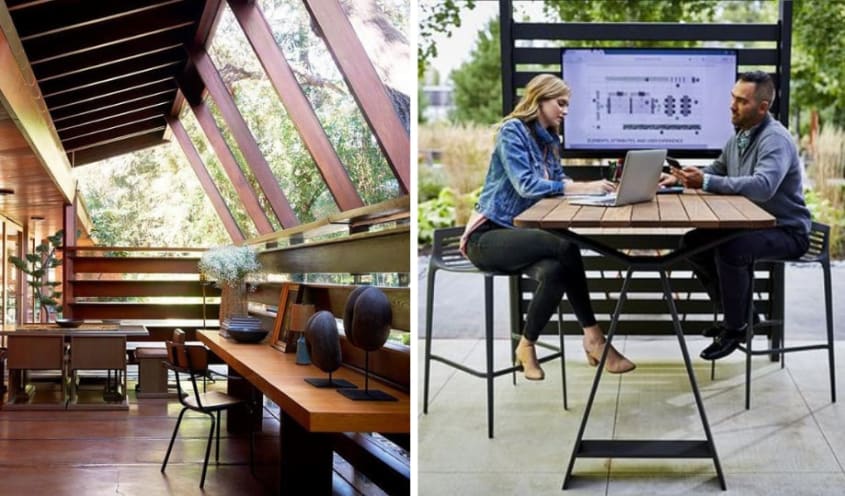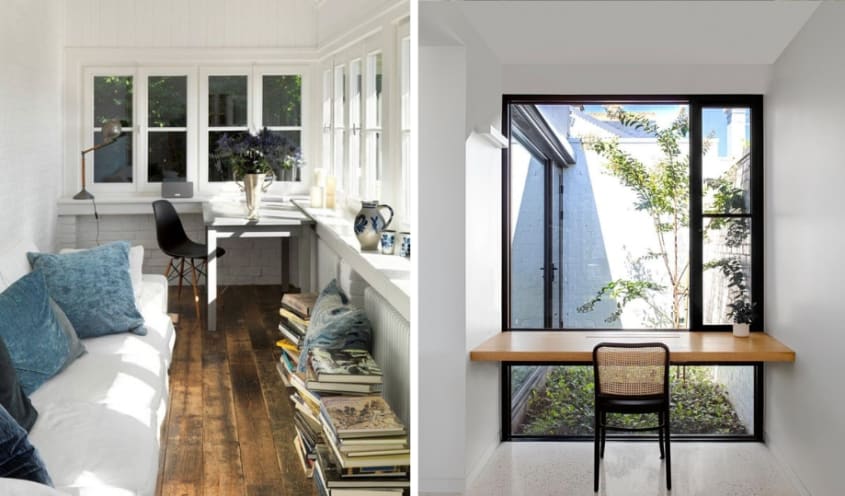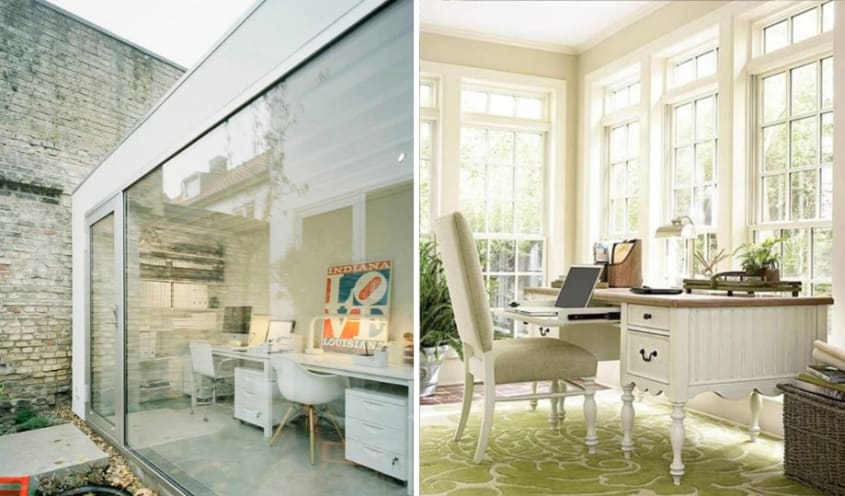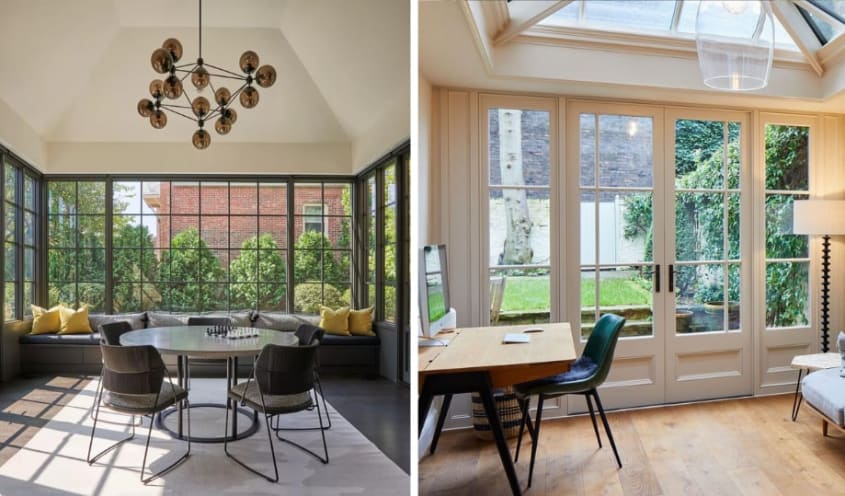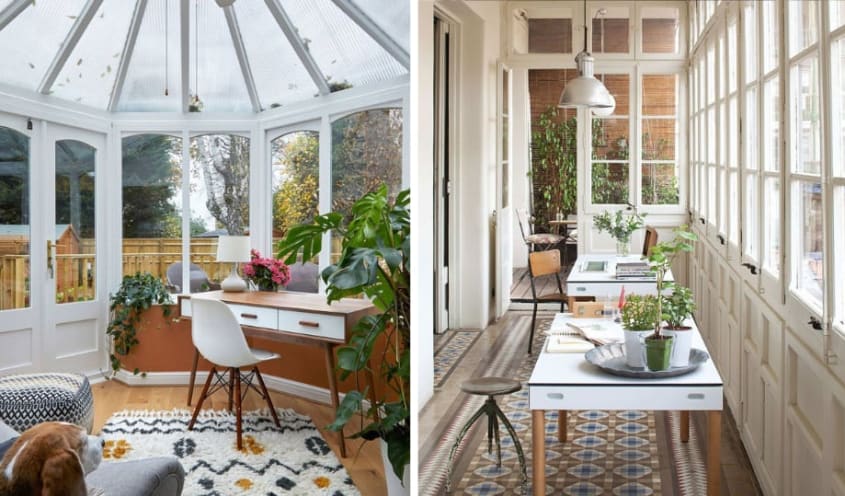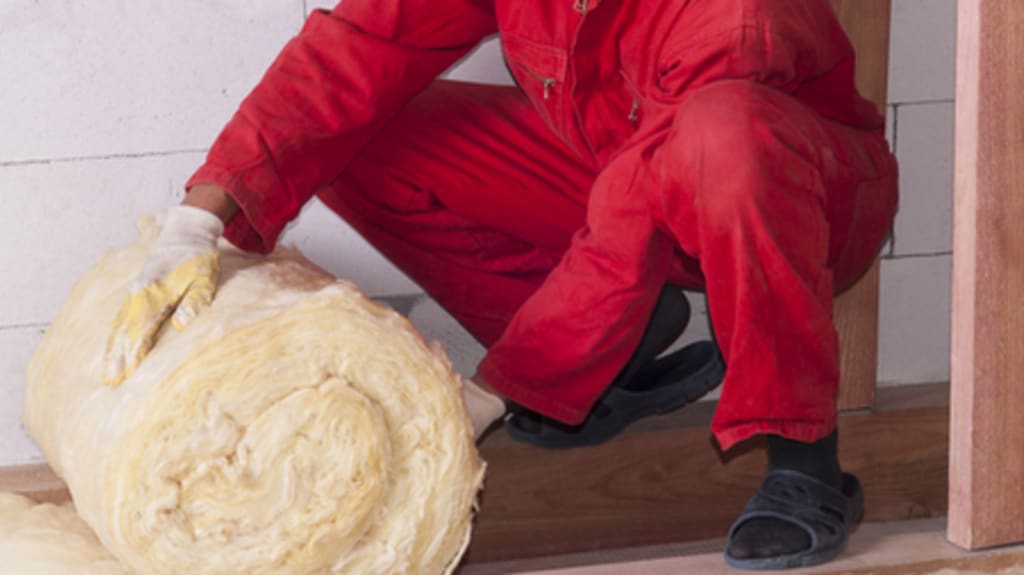Over the past two years, office workers have been working from home in whatever makeshift space they could manage. Kitchens, guest bedrooms, and living rooms were quickly transformed into spaces to host workstations and Zoom meetings.
And now, while some workers are returning to the office, others are looking for better home office solutions. Working from home has its benefits, but it can be difficult to stay focused. Maybe you have kids that demand attention 🙂 or roommates taking over communal spaces. Maybe the domestic to-do list is difficult to ignore. Need a dedicated office space but have no room indoors? Consider a backyard office!
What is a backyard office?
A backyard office is exactly what it sounds like – an office in your backyard! A home office that isn’t exactly in your home. These offices are often separated from the main house to provide a distraction-free environment to get work done. They also help improve quality of life and work–life balance.
Many homeowners are investing the money they’ve saved from not being able to travel or go out with friends into their homes. Renovations are on the rise, and home additions, decks and patios, and custom sheds can provide the perfect backdrop for your backyard office. Not only do they add value to your life and property, but they can also provide potential rental opportunities down the line!
That said, it’s important to note that investments won’t always have the same return. If you’re going to invest in a backyard office, consider your property, your short- and long-term needs, and the return on investment (ROI) of your project.
How do I build a backyard office?
There are several ways to go about building a backyard office. The first way is to not build it yourself but order a prefab studio shed that you can use as an office. The main consideration here is that anything prefab is going to cost more. If you prefer to customize things, another option is to hire an architect or architectural technologist to help you with the design and construction of your project. Likewise, more complicated structures, such as a sunroom addition, should likely be handled by licensed contractors. The third option is to DIY your studio shed.
Types of backyard offices
Before you start building, you’ll need to select a type or style of backyard office according to your needs, your budget, and the space you have available. You’ll also have to consider other elements, such as accessibility and lighting. Here are a few types of backyard offices, their associated costs and considerations, and their ROIs.
Sheds
It’s 2021, and sheds are no longer just about storing your lawn mower and keeping your tools out of sight. They are being reimagined as living spaces, guest houses, and even backyard offices. If you need a private space to work that gets you away from the distractions of your home but still cuts your commute and allows you to go home for lunch, an office shed is a great option. A prefabricated office shed can be purchased as a unit. Alternatively, you could contract a shed to be built on your property, or you could opt to build your office shed yourself.
Costs
Prefab studio sheds can range between $20,000 and $100,000 depending on the size and finishing materials selected. Custom builds drafted by architects and architectural technologists will run you 8–10% and 1–3% of the construction value, respectively. The last and most economic option is to DIY your office shed – you’ll only have to pay for material costs. Keep in mind that some elements, such as electrical work, will require a licensed contractor.
Considerations
During the planning phase, you’ll need to consider a few things. For example, do you want to be able to use the space all year round? If so, you’ll need to budget for heating and cooling solutions. Do you want your shed to have running water and electricity, as well as a bathroom? You’ll need to hire a plumber and an electrician. Will the office be one room, or do you want something more luxurious with a full kitchen and brainstorming space?
ROI
Studio sheds have the potential to be used as a rental space. With their low operating expenses, their ROI potential is high. Depending on your total costs, you can expect a return of about 50% to 80%. However, in terms of property value, if the shed is pre-fabricated and not placed on a foundation, it’s considered an accessory (i.e., not property) and will not add value when you sell.
Shipping container
Shipping containers are ideal for repurposing as offices because their steel structure offers a strong, waterproof base for ultimate customization. A quick Google search, Pinterest, and TikTok will show the myriad of ways people have creatively used shipping containers for construction. If you want to customize your backyard office without worrying about building the structure itself, a shipping container may be the right option for you.
Costs
When choosing your shipping container, you have to decide if you want a used one or a brand-new one. A used, like-new shipping container can cost around $10,000, while a well-used container can cost between $5,000 and $7,000. New shipping containers, however, are more expensive, and you lose that recycled element of your build.
Considerations
Standard shipping containers are 20 ft or 40 ft long, 8 ft wide, and 8.6 ft tall. You’ll need to consider the size that would best suit your backyard office. Other considerations include labour and materials, electrical, plumbing, and insulation. The wear on the container itself should be considered when buying used.
ROI
Because shipping container offices are not placed on a foundation, they are not generally considered permanent structures and do not add value to your property. However, they can be transported to your new home when/if you move, or they can be sold as a unit. There is potential to rent out the office if you’re not personally using it, which would provide a return on the purchase and renovation.
Patio
A patio office can be a wonderful respite from the stuffy indoors or distracting shared spaces. Building one can be as simple as making a few changes to an already existing space on your patio or can involve renovating an outdoor space entirely, such as building a deck. You can also add an overhang to create a shaded work area and avoid direct sunlight overheating your computer and causing too much glare.
Costs
If all you need to do is add a shady spot to an existing deck, the transformation of your patio office may only require a quality adjustable umbrella, which can range from $200 to $2,000 depending on the style and brand. You can also hang curtains along the edge of a covered deck to block any direct sunlight and provide some shade. You’ll need access to an electrical outlet so that you can use a fan for the heat or charge your laptop.
However, if you need to build your outdoor patio office from the ground up, you’ll need to start with a deck. The cost of building a deck can range from $30 to $70 per square foot depending on the material used. Composite wood and cement are the most expensive materials, with fiberglass and wood being the more economic options.
Considerations
A few things need to be considered before investing in your patio office. Is the space seasonal? How will you deal with hot weather? How will inclement weather affect your day at the office? Are there electrical outlets available for your work needs? Will your Wi-Fi reach or will you need an extender? Will bugs be an issue?
ROI
Decks are a great investment as they add value to your property. The ROI for putting in a deck is high and can be up to 100% if using wood – although other materials still generate a high ROI as well.
Sunrooms
Sunrooms are another backyard office option; they’re versatile, sought-after (in terms of resale), and make lovely office spaces that can double as indoor plant rooms. Also, daylight has been proven to make workers up to 18% more effective. And if you use in-home space for an office in Canada, you may be able to claim this as a tax write-off.
Costs
The pricing for a sunroom can vary based on materials, labour, design, region, and more. Whether the sunroom is a four-season room or not also affects the overall cost. The average cost of a sunroom in Toronto ranges from $260 to $340 per square foot.
Considerations
In terms of use as an office space, you’ll need to consider the temperature and the amount of light. Computer screen glares can cause long-term eye strain, so a good set of blinds for the brightest times of the day would be necessary. If you’re not building a four-season sunroom, then you’ll need to consider where you will work when the room is too cold or too hot.
ROI
The ROI for a sunroom is not particularly high. Generally, between 45% and 50% can be recouped in value. However, in terms of quality of life, sunrooms can make a great addition to a home and can be a selling feature.
Do I need a permit to build a backyard studio shed?
In Ontario, you do not need a permit if the structure is smaller than 10 m2 and 4 m tall. However, you do need one to make changes to existing structures, excavate or construct a foundation, build a porch, or add a structure with plumbing. That said, be sure to check with your municipality as it may have different rules. In Quebec, each municipality governs the rules regarding the size, shape, and finish of sheds.
Looking to build?
If you’re working from home and want to greatly improve your quality of life, creating an office space you love that meet your needs is important. Whether you’re designing a custom shed, building a deck, renovating a shipping crate, or adding a sunroom, the perfect home office setup is waiting for you! Looking for more office inspiration? Check out this year’s office trends!
By Katrina Hesman
Katrina Hesman is an editor/writer/artist who enjoys taking part in the creative world as well as writing about it. Home renovations are a form of self-expression that she loves, and researching and writing about the latest trends in design and renovations is a hobby of hers. Having completed a couple extensive home renovations, she has an appreciation for the time and effort it takes to take on renovation projects and for how satisfying the end results can be.
